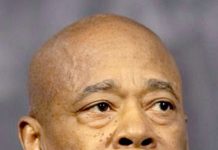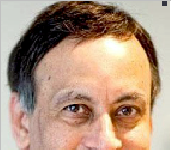واشنگٹن ڈی سی(پاکستان نیوز)ملک بھر میں 1982 کے بعد پہلی مرتبہ سالانہ افراط زر کی شرح 7.9 فیصد تک پہنچ گئی ہے، لیبر ڈیپارٹمنٹ کے جمعرات کو جاری کردہ اعداد و شمار کے مطابق، فروری میںافراط زر کی شرح 0.8 فیصد اور گزشتہ 12 مہینوں میں 7.9 فیصد اضافہ ہوا۔لیبر ڈپارٹمنٹ کے کنزیومر پرائس انڈیکس نے ماہانہ اور سالانہ دونوں بنیادوں پر قیمتوں میں اضافے کی رفتار کو ظاہر کیا۔ محکمے نے کہا کہ پٹرول، مکانات اور خوراک کی قیمتوں میں اضافے نے فروری کے مہنگائی کی شرح میں اضافہ کیا۔اقتصادی ماہرین نے جنوری اور فروری کے درمیان سالانہ بنیادوں پر قیمتوں میں تقریباً 7.9 فیصد اور 0.6 فیصد اضافے کی توقع کی۔ سالانہ افراط زر فروری میں 1982 کے بعد سے بلند ترین شرح پر پہنچ گیا اور ماہانہ افراط زر اکتوبر 2021 کے بعد پہلے مہینے میں بڑھ گیا۔خوراک، توانائی، پناہ گاہ اور اشیائے خوردونوش کی ایک وسیع رینج کی بڑھتی ہوئی قیمتوں نے COVIDـ19 وبائی مرض سے دوسری صورت میں مضبوط بحالی کے درمیان گھریلو بجٹ کو نچوڑ دیا ہے۔مزدوروں کی قلت، سپلائی چین میں خلل اور معاشی بحالی نے ضروری اشیا کی قیمتوں میں تیزی سے اضافے کو ہوا دی ہے کیونکہ بے روزگاری وبائی مرض سے پہلے کی سطح کے قریب ہے۔صرف فروری میں گروسری کی قیمتوں میں 1.4 فیصد اضافہ ہوا اور سال میں 8.6 فیصد اضافہ ہوا ، اپریل کے دوران 1981 کے بعد سب سے تیز سالانہ اضافہ ریکارڈ کیا گیا ۔ توانائی کی قیمتوں میں گزشتہ ماہ 3.5 فیصد اضافہ ہوا، جس کی وجہ پٹرول کی قیمتوں میں ماہانہ 6.6 فیصد اضافہ اور 7.7 فیصد اضافہ ریکارڈ کیا گیا۔فیڈرل ریزرو اگلے ہفتے شرح سود میں اضافہ کرنے کے راستے پر ہے کیونکہ افراط زر بینک کے سالانہ ہدف سے کافی زیادہ ہے۔ فیڈ کے چیئرمین جیروم پاول نے گزشتہ ہفتے اس اعتماد کا اظہار کیا کہ بینک ایک مضبوط لیبر مارکیٹ کو متاثر کیے بغیر شرحوں میں اضافہ اور افراط زر کو ٹھنڈا کرنے میں کامیاب ہو جائے گا۔ریپبلکنز نے تقریباً ایک سال قبل بائیڈن کے دستخط کردہ 1.9 ٹریلین ڈالر کے اقتصادی ریلیف بل پر افراط زر کا الزام لگایا ہے۔ اگرچہ کچھ ماہرین اقتصادیات کا کہنا ہے کہ پیکج میں شامل محرک چیک نے ممکنہ طور پر مہنگائی کو بڑھانے میں مدد کی۔
مہنگائی کے لیے جنگ کے نامعلوم مضمرات کے باوجود، بڑھتی ہوئی قیمتیں صدر بائیڈن اور ڈیموکریٹس کے لیے وسط مدتی انتخابات سے قبل ایک بڑھتا ہوا سیاسی مسئلہ ہے۔ بائیڈن کی معیشت کو سنبھالنے کے ساتھ ووٹر کی منظوری میں مسلسل گراوٹ آئی ہے، یہاں تک کہ امریکی معیشت میں گزشتہ سال 6.5 ملین ملازمتیں شامل کرنے کے بعد، 2021 میں 5.7 فیصد اضافہ ہوا، اور صارفین کے اخراجات کو وبائی امراض سے پہلے کی سطح سے زیادہ تقویت ملی۔
“آسمان کو چھوتی مہنگائی نے مزدوروں کے بحران کے درمیان مزدوروں کی خدمات حاصل کرنے اور برقرار رکھنے میں مشکلات کو مزید بڑھا دیا ہے۔ ریکارڈ بلند توانائی کی قیمتوں نے اوور ہیڈ اور شپنگ کے اخراجات میں اضافہ کیا ہے۔ امریکہ کے چھوٹے کاروبار اپنے شیلفوں کو ذخیرہ کرنے کے لئے جدوجہد کر رہے ہیں اور ڈیموکریٹس صرف اپنے سوشلسٹ خواہش کی فہرست کے ایجنڈے کو آگے بڑھانے کی پرواہ کرتے ہیں،” ہاؤس سمال بزنس کمیٹی میں ریپبلکن کی درجہ بندی کرنے والے ریپبلکن ریپبلکن بلین لیوٹکیمیئر نے جمعرات کے ایک بیان میں کہا۔
صارفین کے اخراجات پچھلے سال فیکٹریوں، سپلائی کرنے والوں، خوردہ فروشوں اور بھیجنے والوں کے مقابلے میں کہیں زیادہ تیزی سے بڑھ گئے۔ سپلائی کی قلت، نوکریوں کے مسائل اور COVIDـ19 کی پے در پے لہروں نے سپلائی چین کو ختم کر دیا ہے، قیمتوں کو اونچا کر دیا ہے اور اجرت میں تیزی سے اضافہ ہوا ہے۔
Annual inflation hits 7.9 percent, fastest rate since 1982
BY SYLVAN LANE – 03/10/22 08:33 AM EST 3,024
1,106
Share to Facebook Share to Twitter
WASHINTON DC, Consumer prices rose 0.8 percent in February and 7.9 percent over the last 12 months, according to data released Thursday by the Labor Department.
The Labor Department’s consumer price index (CPI), a key gauge of inflation, showed price growth speeding up on both monthly and annual basis. Rising prices for gasoline, housing and food drove most of February’s inflation spike, the department said.
Economists expected prices to rise roughly 7.9 percent on an annual basis and 0.6 percent between January and February. Annual inflation jumped to the highest rate since 1982 in February and monthly inflation rose for the first month since October 2021.
Rising prices for food, energy, shelter and a wide range of consumer goods have squeezed household budgets amid an otherwise strong recovery from the COVID-19 pandemic.
A combination of labor shortages, supply chain disruptions and the swiftness of the economic recovery has fueled rapid price increases for essential goods as unemployment plunges close to pre-pandemic levels.
Grocery prices rose 1.4 percent in February alone and are up 8.6 percent on the year — the fastest annual increase since April 1981. Energy prices rose 3.5 percent last month, led by a 6.6-percent monthly increase in gasoline prices and a 7.7 percent increase in fuel oil prices.
Without food and energy prices, which are historically more volatile, the CPI rose 0.5 percent in February and 6.4 percent on the year.
The Federal Reserve is on track to hike interest rates next week as inflation steams well above the bank’s annual target. Fed Chairman Jerome Powell expressed confidence last week the bank would be able to raise rates and cool off inflation without denting a strong labor market.
But the war in Ukraine has raised new challenges for the Fed and other policymakers as they grapple with inflation. While prices for energy and food have risen since the invasion, a decline in global economic activity could also ease pressure on prices.
Even with the war’s unknown implications for inflation, rising prices are a growing political problem for President Biden and Democrats ahead of the midterm elections. Voter approval with Biden’s handling of the economy has fallen steadily amid increasing inflation, even after the U.S. economy added 6.5 million jobs last year, grew 5.7 percent in 2021, and powered consumer spending above pre-pandemic levels.
“Skyrocketing inflation has compounded the difficulty to hire and retain workers amid a labor crisis. Record high energy prices have led to soaring overhead and shipping costs. America’s small businesses are struggling to stock their shelves and the Democrats only care about pushing their socialist wish-list agenda,” said Rep. Blaine Luetkemeyer (Mo.), ranking Republican on the House Small Business Committee, in a Thursday statement.
Republicans have blamed high inflation on the $1.9 trillion economic relief bill signed by Biden roughly a year ago. While some economists say the stimulus checks included in the package likely helped drive inflation higher, it was only one of several factors fueling higher prices.
Consumer spending rebounded last year far quicker than the factories, suppliers, retailers and shippers needed to satisfy a glut of spending. Supply shortages, hiring issues and successive waves of COVID-19 have upended supply chains, pushed prices higher and led to rapid wage growth.
















